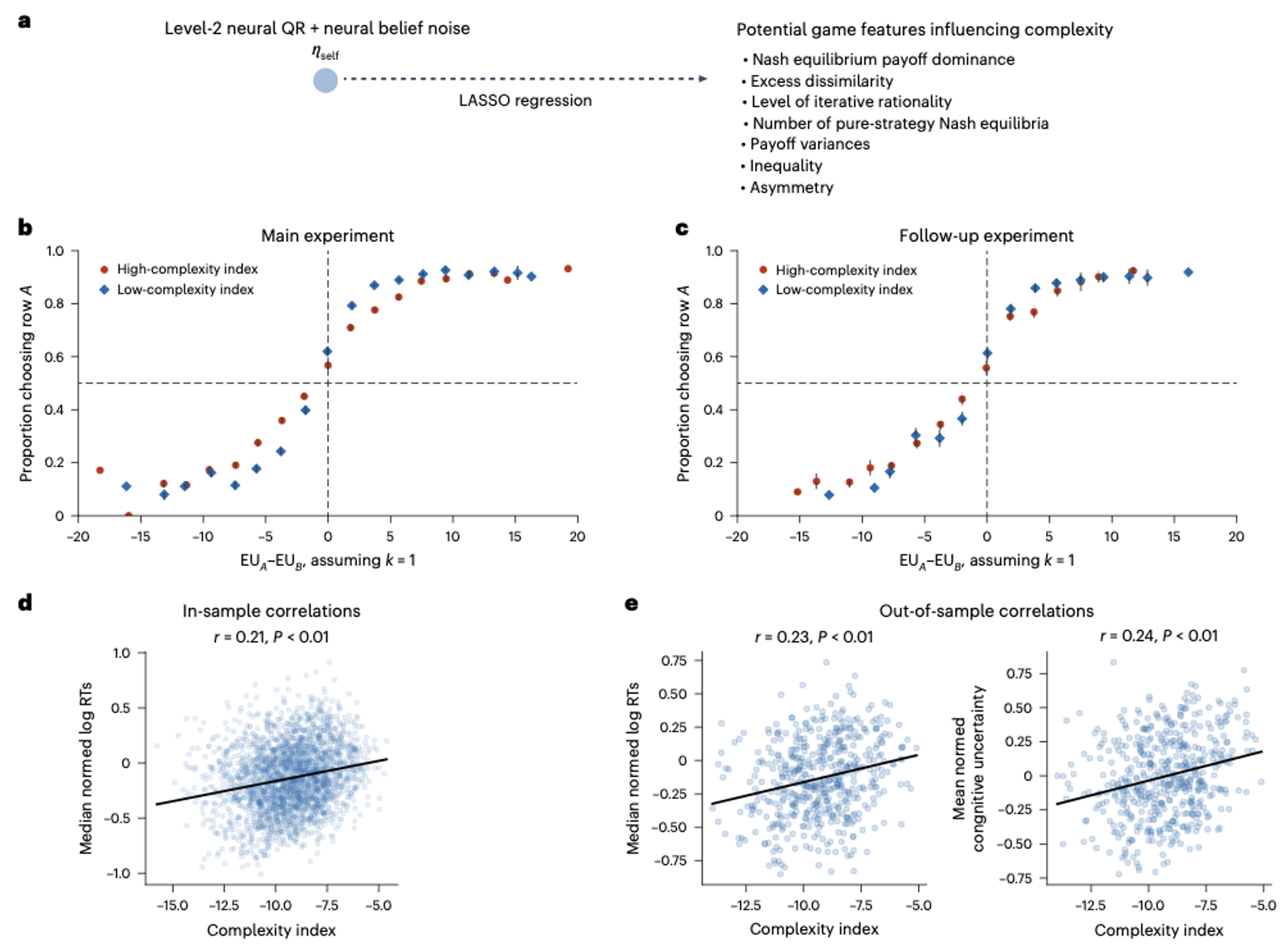Have you ever wondered why some things feel easy to master while others seem endlessly perplexing? Recent research in machine learning is shedding light on this puzzle, uncovering the hidden layers that shape how we approach and understand strategic games.
In a study from the Princeton University AI Hub, investigators are combining large online experiments with advanced neural networks to dissect the subtle elements that make certain games challenging for the human mind.
Matrix Games: The Perfect Testbed
The study zeroed in on matrix games, a classic setting where each player selects an option and outcomes depend on both participants’ choices. With real monetary rewards on the line, players’ decisions reflected genuine strategic reasoning.
The research team collected a vast dataset, analyzing thousands of game sessions to model how people actually think and act in these scenarios.

Figure 4. Developing an interpretable complexity index for strategic games. (credit: Princeotn AI)
Three Steps to Understanding Game Complexity
- Massive Data Collection: Harnessing the power of crowdsourcing platforms, the researchers gathered over 90,000 choices from more than 2,400 distinct matrix games.
- Behavioral Modeling with Neural Networks: These choices were analyzed using flexible neural networks, which learned to predict human decisions from the data, explaining up to 92% of observed behavior.
- Peering Inside the Model: By applying interpretability techniques, the team pinpointed which game features most strongly influenced perceived difficulty, offering new insights into human strategy.
Bridging AI and Human Reasoning
To move beyond the idea of AI as a “black box,” researchers incorporated principles from behavioral game theory. By modeling limited reasoning (level-k thinking) and decision-making noise (quantal response), they created structured models that still performed remarkably well, explaining about 88% of behavioral patterns. The real breakthrough was letting parameters like behavioral noise adapt to each game’s context, capturing nuances that traditional approaches often miss.
What Drives Perceived Game Complexity?
Analysis of the neural network revealed three major factors that shape a game’s complexity:
- Payoff Dominance: Games with a clear best choice (a dominant Nash equilibrium) feel easier and more straightforward.
- Arithmetic Difficulty: The harder it is to calculate payoff differences, the tougher a game feels.
- Thinking Depth: Games requiring multiple layers of reasoning raise the complexity bar.
These elements were distilled into a single “Game Complexity Index.” Higher scores signaled more challenging games, as reflected by players’ increased randomness in choices and longer time spent thinking before making a move.
Why This Matters Beyond the Research Lab
The Game Complexity Index didn’t just work for the original experiments. It also predicted how new groups of players would behave in unfamiliar games, highlighting its power to capture universal aspects of human cognition, not just quirks of a single study. This opens the door for future research into how complexity affects learning, decision-making, and even fun in games.
Takeaway: AI as a Tool for Understanding Ourselves
This research shows that machine learning isn’t just about replacing human intuition, it can amplify and refine our understanding of why we think and act the way we do. By marrying rigorous experiments with computational modeling, scientists are opening new frontiers in the science of decision-making and play.
Tom Griffiths, explores this topic in depth in his forthcoming book, The Laws of Thought: The Quest for a Mathematical Theory of the Mind.

Machine Learning Reveals the Hidden Complexity of Games